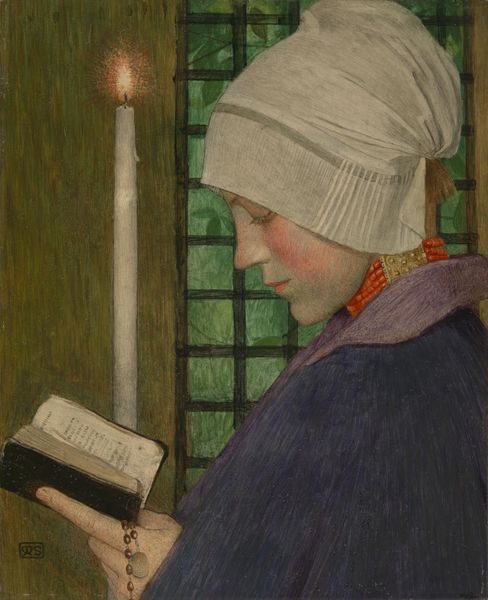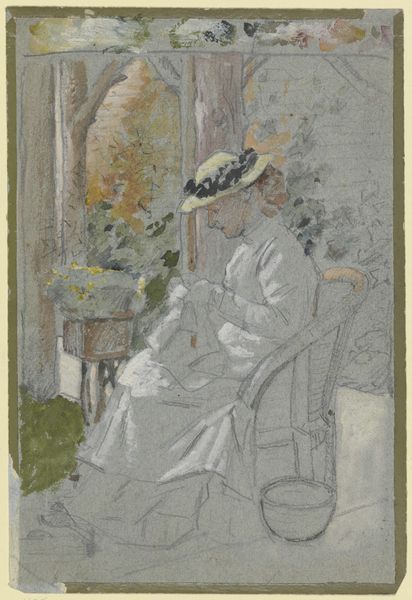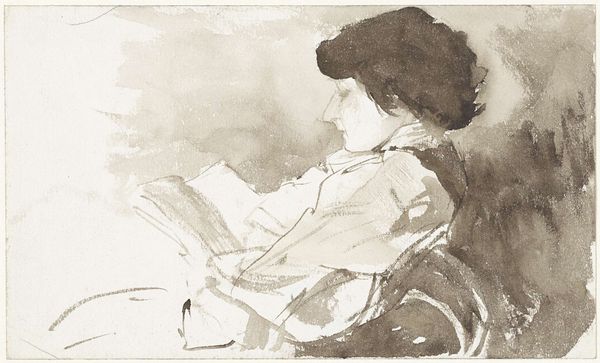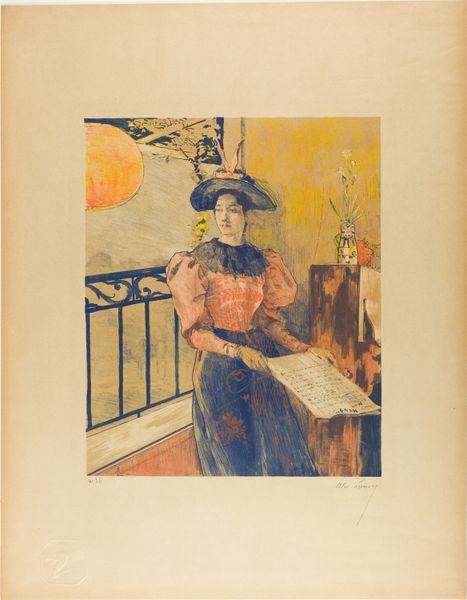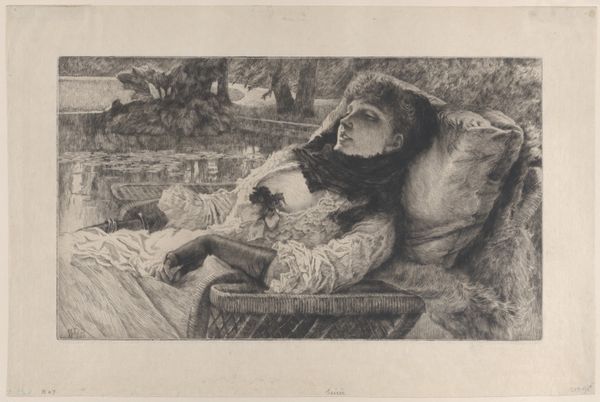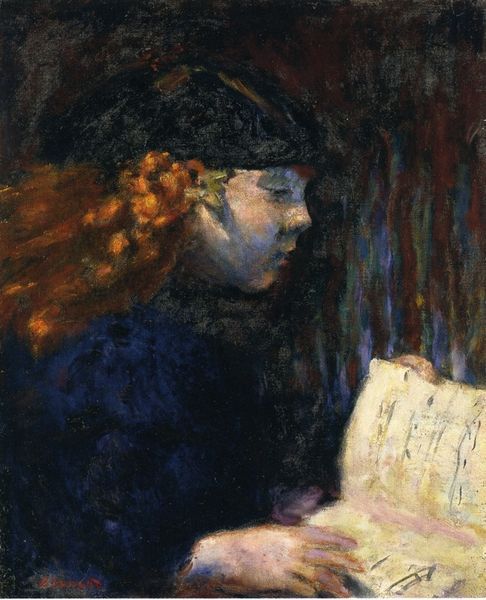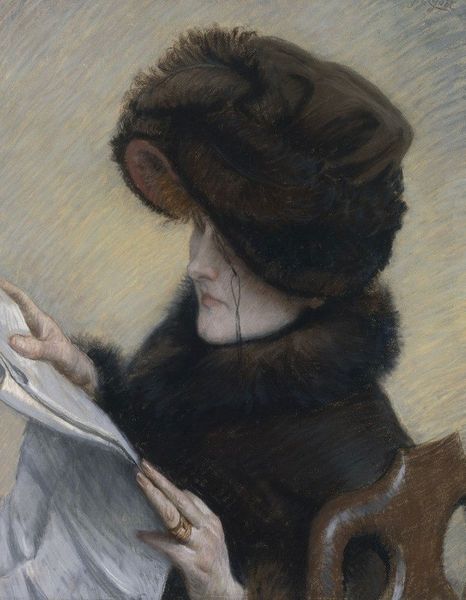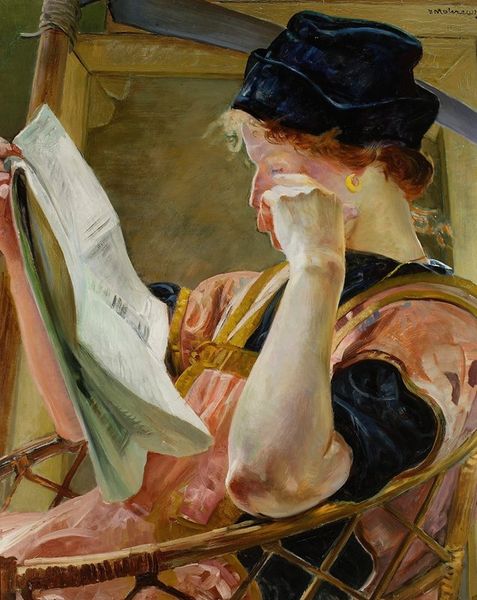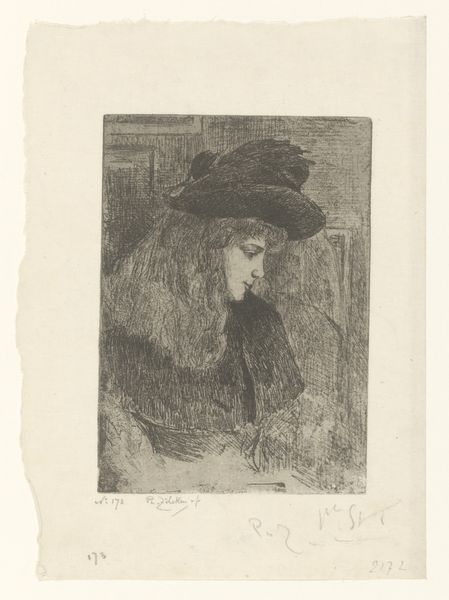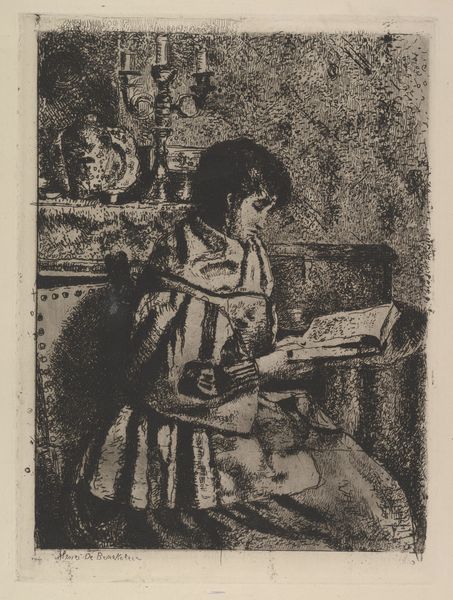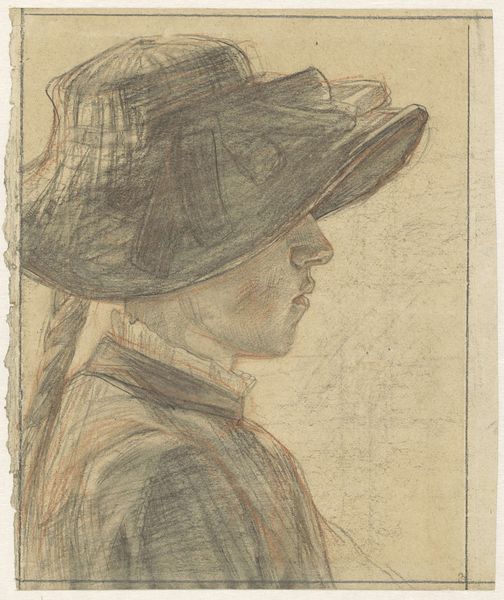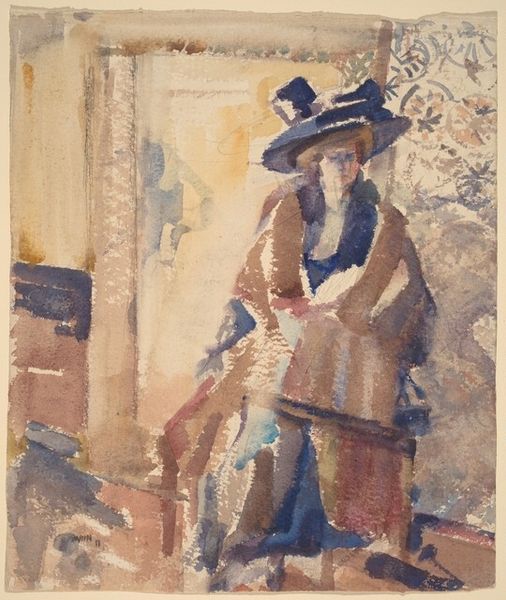
drawing, tempera, painting
#
portrait
#
drawing
#
tempera
#
painting
#
impressionism
#
intimism
#
academic-art
Copyright: Public Domain
Curator: Here we have a painting, artist and date unspecified, held here at the Städel Museum: *Young Woman with Bonnet, Reading to the Right*. Tempera on canvas. What do you see when you look at it? Editor: The immediate feeling is of quiet introspection. There's something almost dreamlike in the softness of the colors and the way the figure blends into the background. Curator: The woman's dress and hat – and that particular hat – strike me as symbolic, certainly signaling her place within the domestic sphere, possibly even a commentary on the roles assigned to women in that period, confined to reading indoors instead of pursuing more expansive roles in society. The gaze downward, perhaps indicative of suppression or forced modesty? Editor: I'm more drawn to the hat itself. Notice the curious patchwork design, almost quilt-like, and how it obscures much of her face, drawing attention instead to the act of reading itself. Perhaps the artist wanted to represent the power of the written word, a sort of talisman worn as an armor. Also, is there something phallic in the ceramic vessel and leaves situated just so to her back? Curator: The choice of materials – tempera specifically – lends itself to that soft, almost matte effect. One can argue that it represents that the work has not been subject to the typical artistic patriarchy, as tempera provides a voice for otherwise dismissed styles. Its usage then offers more weight to that which she is looking at; it symbolizes a quest for further knowledge of not only herseld but her status within society. Editor: I appreciate your insight. But don't you think it could also be read as simply an intimate glimpse into a woman’s world? An invitation to the simple joy of being immersed in a good book and the symbolism of literature? Maybe her lack of identifying status comes down to a pure statement that knowledge supercedes those expectations you have identified? Curator: Perhaps. Though, I am hard-pressed not to immediately consider broader societal dynamics when contemplating art such as this. We must ask who could learn, who was taught to be docile... the work's symbolism cannot simply be innocent on that count. Editor: Indeed, our differing perspectives bring out how the work lives as much in our own interpretations as in the artwork itself. The quiet of the woman speaks volumes still, whatever status and background. Curator: A potent reminder of how art sparks ongoing conversation about then and now.
Comments
No comments
Be the first to comment and join the conversation on the ultimate creative platform.
